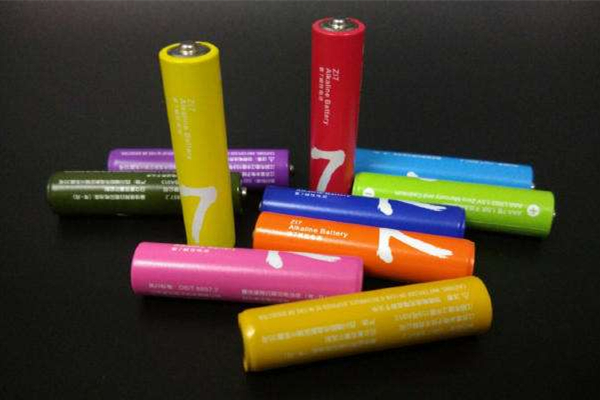How to Charge a LiPo Battery for RC-Battery Quantity and Charge Method
Mar 23, 2020 Pageview:1126
Lithium polymer batteries have been a superb advancement in battery technology for RC use. But then, as a result of the chemistry of lithium cells, there is a risk of fire if the charging process is not carried out correctly. This is, however, an inevitable thing because of the nature of the main substance involved --lithium. This is similar to the numerous things we use on a daily basis, including the knives in the kitchen, the kitchen cleaners, our automobiles, dishwashers, etc. which are of course, dangerous if not properly handled and managed. But their danger is reduced to almost zero if they are used with care and the right handling.
What should you charge for the LiPo RC battery?
LiPo batteries mostly need to be charged relatively slowly when compared to the NiCd or NiMH batteries. While we typically charge a 3000 mAh NiMH battery at around four or five amps, LiPo batteries having the same capacity must not be charged at an amperage higher than three amps. Just like there is a C rating that is used to determine the safe and continuous discharge of a battery, there is also a C rating for safe charging as well. For the majority of LiPo batteries, the charging rate is 1C. The equation works quite like the other discharge rates we’ve talked about on this site, where 1000 mAh = 1A. For 3000 mAh batteries, we would charge them at 3A, for 5000 mAh LiPo batteries, the charger needs to be set to 5A, and for a 4500 mAh battery, the setting should be 4.5A to get the correct charge speed.
To charge your Lipo battery safely, you must know that the safest charge rate for LiPo batteries is 1C, or 1 X the battery capacity in amps.
Nowadays, however, more LiPo batteries are being produced and released, and many of them come with the promise of charging very fast -beating the usual charging times. A battery that’s got a label of "3C charge rate" as an example. Judging by the battery capacity of 5000 mAh or 5A, this means that the battery can be safely charged up to 15Amps. Although it is best to use a default charge rate of 1C, you should always check the battery label to decide the battery’s highest safe charge rate.
Due to the risk of fire when using and charging LiPo batteries, certain precautions have to be taken regardless of if or not the danger is likely to occur.
The first is that you must always keep a fire extinguisher close to you. While this may not completely extinguish a fire triggered by LiPo use, the fire extinguisher will at least help you contain the fire and prevent it from spreading.
Another measure to take for safety is to try as much as possible to charge your LiPo battery in a fireproof or fire-resistant container. Many people today choose LiPo bags (there are lots of them on the market). While they may come a bit pricey, they are more portable than most other solutions.
Also, it is important that you never charge your LiPo batteries unattended. This is important because should something go wrong, you would be there to quickly take action. Of course, this doesn’t mean that you must be in the room while your battery is charging, but you must endeavor to remain around in the house, and not go mowing the lawn or get involved with anything that will take your attention and not conscious of the battery you’re charging to take action should something go wrong.
How can you charge several LiPo batteries for RC at once?
Charging your Lipo batteries one at a time to power your drone may turn out to be quite a tedious task, as you may have to wait several hours to get each of them completely charged. Imagine that you have 6 completely empty batteries, each of which takes an hour to be completely charged. This means you must wait at least 6 hours before using your batteries or flying your drone. That may be too much time to wait.
However, with parallel charging, you can charge many batteries concurrently and save lots of time. If you do parallel charging, your batteries will definitively be ready to use on time if for instance, you have up to 6 batteries and you charged them all at the same time. That’s what you enjoy when you decide to go parallel in the charging of your batteries.
Parallel charging requirements
A cable or wiring adapter that will be used for the main leads and for balancing leads (all must have an equal number of connections).
Lipo batteries of up to 6 packs
Charger for Lipo battery
A parallel charging board
You can find affordable parallel charging boards and chargers on Amazon or any online store or mall near you. Then the next step you have to ensure is that all the components are all compatible with themselves. If they are not compatible, there are sure to be problems, and you do not want that.
Please note that this type of charging comes with restrictions and limitations in order to avoid burning the charging board or even the batteries you are charging.
How to charge LiPo batteries in series or in parallel?
Most times, we are asked if batteries should be charged in parallel or in series. In this section, we are going to answer that question.
Parallel charging is a dangerous way of charging -of course, as with many things electrical, there are dangers. But it is on a different level from parallel charging. Even the experts from battery manufacturers have said it that charging batteries in parallel is dangerous and as much as possible, should not be attempted even if you are an experienced user.
One of the issues with parallel charging or even with using your batteries in parallel is that the connection of batteries in parallel doubles the capacity of the batteries, which is important for maintaining the voltage of each battery. This also means that the charger, which normally checks the battery during charging times to avoid overcharging, cannot see all the voltages of the individual batteries, but sees only one.
Charging in series is the safer of the two methods if you have correctly set up the charger. Although, it is no less dangerous than a normal charge.
If you want to charge some Lipo batteries (say, 6 single cell batteries) of the same capacity, wire them up in series. Then set up your charger like it was a six-cell Lipo and thereafter balance charge your LiPo. Balance charging them is effectively making the charger charge each cell individually, and ensures they are all kept at constantly at safe levels.
- Prev Article: Lithium Ion Battery Electrolyte Review Definition and Working
- Next Article: Water on Lithium Battery Fire-Using and Fixing
Leave Message
Hottest Categories
-
Hottest Industry News
-
Latest Industry News














